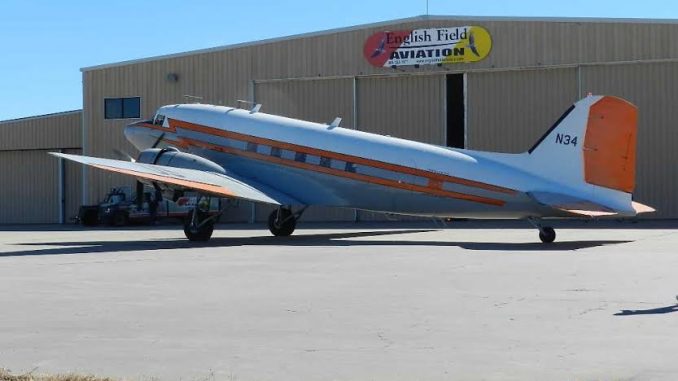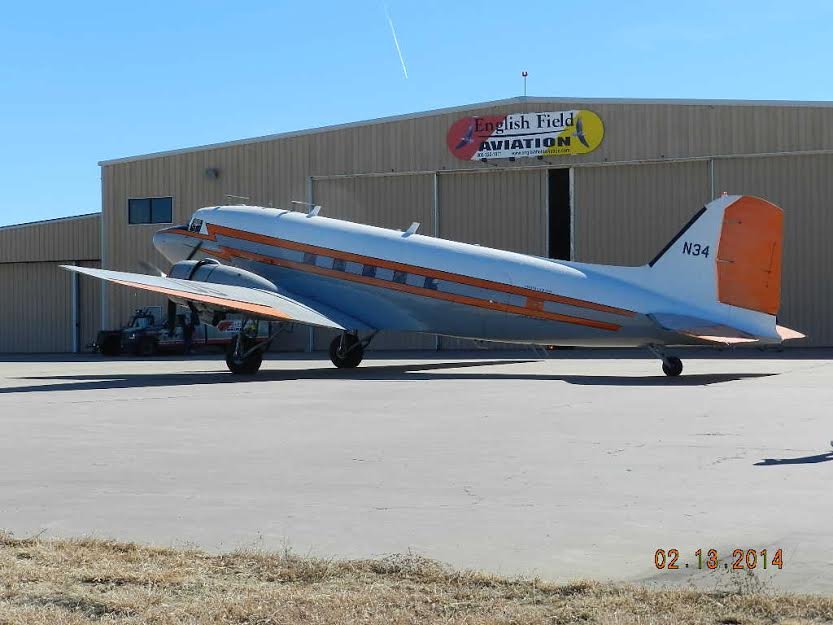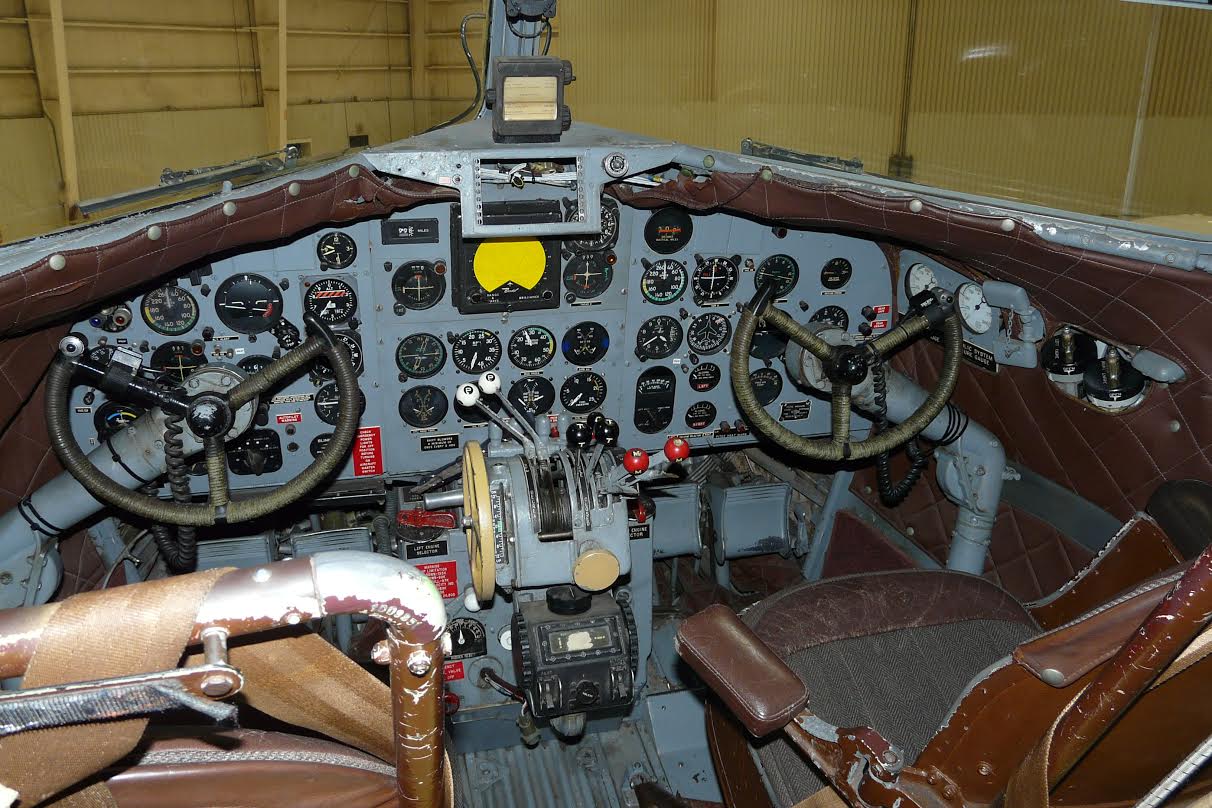

The Federal Aviation Administration has just retired the last of their Douglas DC-3 flight inspection aircraft. Registered N34, the aircraft wore many hats during its decades of FAA service, and now calls the Texas Air & Space Museum its home. After more than a year of negotiations between TASM and the FAA, the DC-3 made her final flight to the museum, in Amarillo, Texas on February 13th. She currently resides inside a leased hangar owned by English Field Aviation, but TASM expect to have their own permanent museum building soon. They recently purchased twenty acres of land beside the airport with eight large warehouses on it, but need a further half million dollars to refurbish one of the buildings for the DC-3 and their other artifacts. Anybody wishing to help out with the cause can visit buildtheDC3ahome.org or call the museum at 806-335-9159.
As reported on the museum’s website, the Douglas Aircraft Company completed the aircraft in May, 1945 in the factory which is now Building 3001 at Tinker AFB, OK. The transport plane started life as a US Army Air Force TC-47B (S/N 44-77027), but the Pentagon almost immediately re-assigned her to the US Navy as an R4D-6 (Bureau No 99856). She served the Navy until 1956 in various transport squadrons at NAS Norfolk in Virginia; Quonset Point, Rhode Island; London, England and NAS Glenview, Illinois. In 1958, the Navy loaned her to the CAA, the FAA’s predecessor. They converted her into a Flight Inspection aircraft. Flight Inspection involved the process of airborne calibration of FAA radio navigation devices such as the Instrument Landing System, omnidirectional range transmitters and radars. The specialized equipment aboard the DC-3 checked for and recorded proper signal strength, clarity and direction for each of the systems under test.
In 1966, the FAA finally received title to the aircraft, and modified it to the present configuration as a DC-3C-R 1830-94, type II Flight Inspection aircraft. Between 1966 and 1979, she spent most of her time operating out of California, but ended her career as the main flight inspection training aircraft in Oklahoma City in 1980 and 1981. Today, due to vast improvements in electronics, much smaller, faster and more efficient Beech King Air 300s, Learjet 60s and Canadair Challengers accomplish the same Flight Inspection job. The FAA were not through with the venerable DC-3 though, and brought her out of storage in 1985. After refurbishment, she flew to air shows around the country operating mainly as a recruiting/information tool. She went back into storage in 1995, only to re-emerge, freshly overhauled, for a third life in 2002. She participated in the US National Centennial of flight in 2003 and played a key role in celebrating the Oklahoma State Centennial in 2006 and 2007. In 2008 and 2009, her principle mission was to help celebrate the FAA’s 50th anniversary. But in 2013 the FAA finally decided to put her up for adoption.
Chuck Accurso of the Texas Air & Space Museum said. “It’s a jewel. We are just so proud to have it. The FAA still owns it. They paid to fly it in. We didn’t have to assemble it. We didn’t have to truck it in. It was a Godsend.”

More than 17,000 DC-3s were built by the US, Russia and Japan. Of these, there are over 400 still registered in the US alone and there may be as many as 1,400 flying worldwide. Oddly this number continues to grow, as many DC-3/C=47 airframes are converted to turbine powered Basler BT-67’s.



Be the first to comment
Graphic Design, Branding and Aviation Art